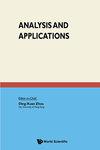深度残差网络的收敛分析
IF 2.4
2区 数学
Q1 MATHEMATICS
引用次数: 0
摘要
在过去的二十年里,各种强大的深度神经网络架构为深度学习的成功做出了巨大的贡献。其中,深度残差网络(ResNets)尤为重要,因为它们在许多深度学习竞赛中赢得了第一名,在计算机视觉中展示了巨大的实用性。此外,ResNets是深度学习发展史上第一类真正深度的神经网络。理解深度网络的收敛性具有重要的数学意义和实际意义。我们的目的是研究深度ResNets在网络参数趋于无穷大时的收敛性。为此,我们首先给出了具有快捷连接的一般深度神经网络的矩阵-向量描述,并利用激活矩阵的概念给出了网络的显式表达式。然后将收敛性简化为涉及非方阵无穷积的两个级数的收敛性。通过对这两个级数的研究,我们建立了ResNets点向收敛的充分条件。我们还对基准机器学习数据进行了实验,以说明结果的潜在有用性。本文章由计算机程序翻译,如有差异,请以英文原文为准。
Convergence Analysis of Deep Residual Networks
Various powerful deep neural network architectures have made great contributions to the exciting successes of deep learning in the past two decades. Among them, deep Residual Networks (ResNets) are of particular importance because they demonstrated great usefulness in computer vision by winning the first place in many deep learning competitions. Also, ResNets are the first class of neural networks in the development history of deep learning that are really deep. It is of mathematical interest and practical meaning to understand the convergence of deep ResNets. We aim at studying the convergence of deep ResNets as the depth tends to infinity in terms of the parameters of the networks. Toward this purpose, we first give a matrix–vector description of general deep neural networks with shortcut connections and formulate an explicit expression for the networks by using the notion of activation matrices. The convergence is then reduced to the convergence of two series involving infinite products of non-square matrices. By studying the two series, we establish a sufficient condition for pointwise convergence of ResNets. We also conduct experiments on benchmark machine learning data to illustrate the potential usefulness of the results.
求助全文
通过发布文献求助,成功后即可免费获取论文全文。
去求助
来源期刊
CiteScore
3.90
自引率
4.50%
发文量
29
审稿时长
>12 weeks
期刊介绍:
Analysis and Applications publishes high quality mathematical papers that treat those parts of analysis which have direct or potential applications to the physical and biological sciences and engineering. Some of the topics from analysis include approximation theory, asymptotic analysis, calculus of variations, integral equations, integral transforms, ordinary and partial differential equations, delay differential equations, and perturbation methods. The primary aim of the journal is to encourage the development of new techniques and results in applied analysis.

 求助内容:
求助内容: 应助结果提醒方式:
应助结果提醒方式:


